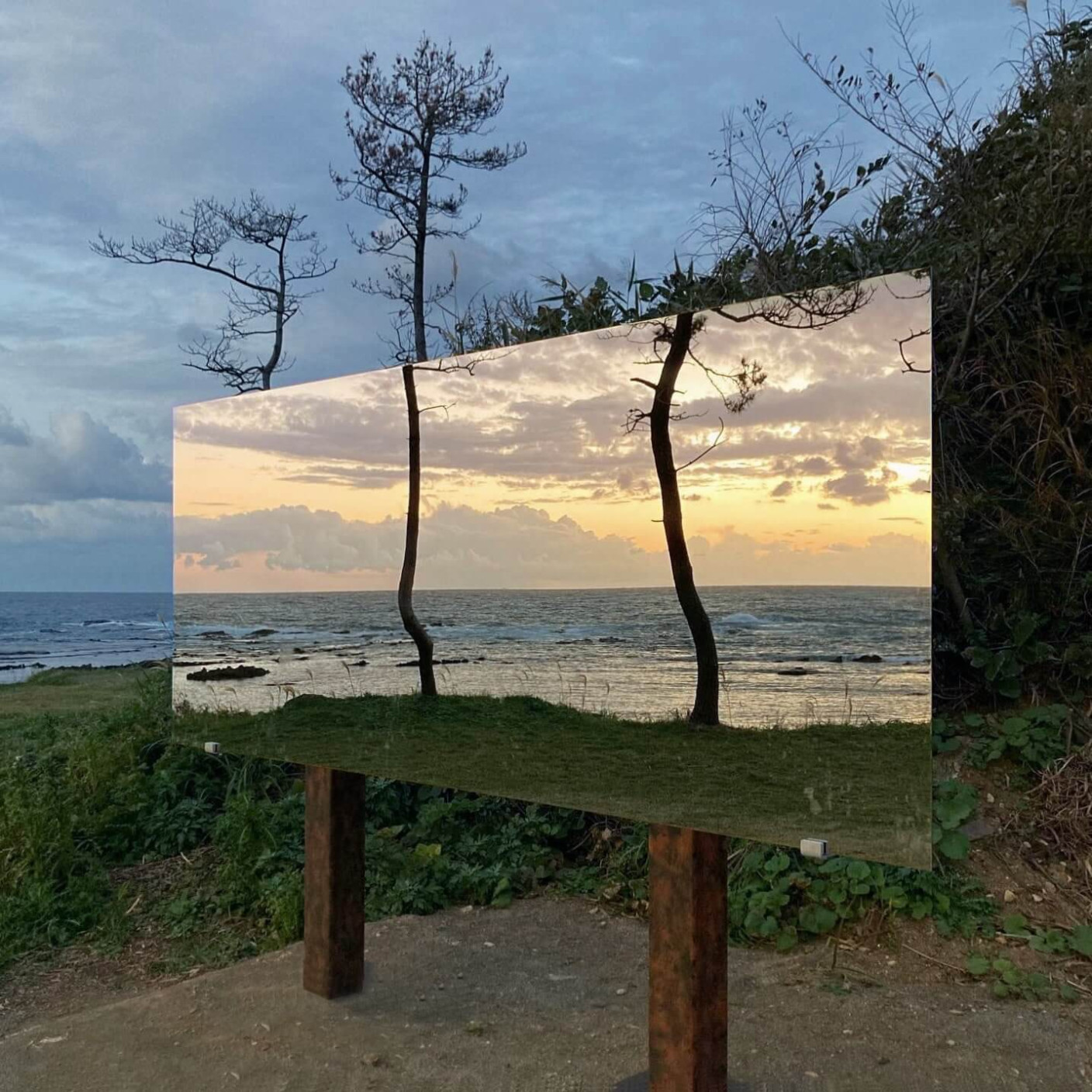Category
More
Loading

To Breathe – Leeum
To Breathe – Leeum
To Breathe (2021) is a site-specific artwork installed in the museum’s rotunda, where diffraction grating film is used to refract sunlight that enters the circular space through its dome-shaped skylight, illuminating a series of window frames that enclose its central cavity. The diffraction grating film allows natural light to constantly transform in tune with the flow of time, changes in weather and movements of the sun throughout the four seasons, enveloping the interior spiral staircase and surrounding walls in prismatic light before reaching ground level, where it casts a circular splash of color. Breathing within the main axis of the museum that connects its four floors of galleries, this light converts the space into a sanctum. Another type of special reflective film that responds to soft light is installed to interact with the rhythm of the window frames along the spiral staircase. This reflective film yields rainbow spectrums and generates unique compositions according to viewers’ movements, resonating with Kimsooja’s ongoing investigation of painting and two-dimensionality. As light passes through the diffraction grating film, which is covered in nano-sized scratches that act as a prism, the interior space is filled with iridescent rays. Such refraction and breathing of the light awaken the audience’s sentiments and thoughts, allowing for both a metaphorical and embodied experience of the artist’s nonmaterial practice of “non-doing, non-making” with light painting. Transposed into light in To Breathe, Kimsooja’s artistic language transcends notions of materiality and delivers the breath of nature unto all beings within its embrace, from the moment the very first life took its first breath until the present, in the same way that light has always unconditionally sheltered and touched countless beings.
Photo by Seungbeom Hur
To Breathe – Leeum
2021, Site-specific Installation with Diffraction Grating Film
Installed on the Ceiling of the Iconic Rotunda of the Remodeled Leeum, Seoul, Korea
Courtesy of Leeum Museum of Art and Kimsooja Studio, Commissioned by Leeum

To Breathe – Mirror
To Breathe – Mirror
Oku-Noto Triennale: To Breathe, Wanzaki Coast, Suzu, Japan
25 February - 13 June 2021
To Breathe: Mirror (2021) consists of a series of mirror panels installed along the oceanfront that reflect the horizon against a mountainous backdrop. Throughout Kimsooja’s oeuvre, mirrors function as a medium for prolonged questioning and investigation of the conditions of painting, as well as an extension of her “needle” concept in which she seeks to patch up divisions of our times and recover the innate value of human beings. Newly presented at the Oku-Noto Triennale, To Breathe: Mirror resonates and breathes with the natural landscape of the Wanisaki coast. The work integrates both water and earth, reflecting the Other in order to negate the sea’s capacity to demarcate territorial borders according to the modern concept of nations and propose a message of mending and embracing both physical and psychological ruptures.
Photo by Kichirō Okamura
To Breathe: Mirror
Site-specific Installation Consisting of Stainless Steel Mirror Panels, Iron Structures
Courtesy of Oku-Noto Triennale and Kimsooja Studio
Commissioned by Oku Noto Triennale

To Breathe – Suzu
To Breathe – Suzu
Oku-Noto Triennale: To Breathe, Wanzaki Coast, Suzu, Japan
25 February - 13 June 2021
To Breathe: Suzu (2021) introduces diffraction grating film to the windows of an abandoned house. Nano-sized scratches covering this thin film operate as prisms that filter natural light by refracting the sun's rays to produce small, fantastic rainbow spectrums. Unveiling a new light painting as a spatial intervention within a deserted house that has ceased to serve as a site of shelter and storage for local fishermen, this work constitutes a sincere endeavor to breathe regeneration and healing into the space. Viewers who experience the light painting on the house’s interior, or look through its windows to behold the iridescent trajectories of visible light outside, will feel a profound sense of connection by witnessing the water, forest and sky of this coastal landscape merge into a single artwork. In the spirit of supporting artistic collaboration even during a global pandemic, the 2nd Oku-Noto Triennale runs from September 4 to November 6th, 2021.
Photo by Kichirō Okamura
To Breathe – Suzu
2021, Site-specific Installation with Diffraction Grating Film
Courtesy of Oku-Noto Triennale and Kimsooja Studio
Commissioned by Oku Noto Triennale







